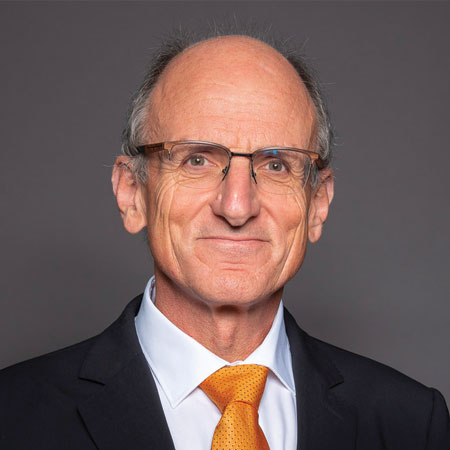How To Jump Aboard The New EU Innovative Health Initiative Train And Where It Is Heading
Executive Summary
For MedTech Europe’s Patrick Boisseau, the newly launched Innovative Health Initiative is a real “game changer.” In this interview, he explains how companies should get involved in cross-sectoral medtech/pharma projects that will revolutionize European healthcare innovation.
Patrick Boisseau, director general industry strategic initiatives at industry association, MedTech Europe, spends 80% of his time working as the representative of MedTech Europe on the governing board of the EU’s Innovative Health Initiative, part of the Horizon Europe program. He believes the project will have a “major impact” on future healthcare delivery through the convergence of innovation in medtech and pharma on a scale never seen before.
Through cross-sectoral initiatives, the IHI aims to create “really new ideas, new contexts, new products and new solutions for patients” through pre-competitive research, the results of which will benefit us all as patients, Boisseau told Medtech Insight during a recent interview. His passion for the topic really brought the scheme, and its exciting potential, to life.
“You can easily imagine that healthcare delivery in 5-10 years from now will be very different from today and that medtech and pharma companies will be very different too,” Boisseau predicted. Not that the aim is to merge the industries, but rather to maximize their cross-sectoral potential, he emphasized.
The MedTech Europe Director added that digitalization is probably the most powerful tool to create convergence in innovation between the different sectors, with applications in robotics and artificial intelligence among other cross-cutting topics that will help revolutionize the way the IHI projects can flourish.
Boisseau explained during the interview how the medtech industry can become involved and benefit and when, how funding operates, and spoke of the initial projects and of the uncertainty around UK industry involvement, amongst several other observations relevant to this new healthcare revolution.
This IHI initiative reflects the reality of what happens in care: by developing these treatments together then they can be integrated more easily into the workflow at hospital level.
The medtech and pharma industries have been discussing new topics in an increasingly open way. IHI is a place where medtech and pharma solutions will be proposed and designed together. This is really new.
Contributing partners are organizations that are not members of the healthcare industry − like charities, foundations or companies from a totally different sector – such as the chemical, digital or IT industries. They can also participate in projects and make their own contribution.
Once the European Commission has assessed the value of industry’s contribution, it will match the amount.
Because the concept of IHI is new for many potential contributors, we have foreseen a ramping-up phase during the first three years to give everyone a chance to manage the initial learning phase.
The intention was to allocate €200m this year, and E300m next year, and then some E350m a year over the next years. The budget is fixed annually by the governing board. We aim to align the budget required for implementing the calls selected by the governing board.
One key eligibility criteria for IHI participation is that there is cross-sectoral contribution. If you look at these six topics, you will see that none is specific to one sector only. COCIR, the EU trade association representing medical imaging, radiotherapy, health ICT and electromedical industries, for example, proposes medical imaging in oncology to be one topic – but if it were just a medical imaging project, it would not be eligible for IHI; so we will have IVD and digital companies participating too.
A significant number of companies in the medtech sector have expressed an interest in one or several of these six topics; and in some cases, medtech companies are promoting an idea where they could take the lead, and in others they plan to contribute to a project led by another company, maybe a pharma company.
There are many different scenarios. But all in all, the medtech sector is responding very positively to this IHI initiative, even though it has almost no previous experience of projects in European public/private partnerships. Medtech companies are learning very fast and becoming effectively involved.
Any potential partner, public or private, can attend, listen to the presentations on the six topics and then start discussing opportunities with those present, including talking about forming or enlarging existing consortium.
There will also be a partner search tool available on the IHI website for those looking, for example, for specific expertise to add to their consortium. IHI will organize this public brokerage event every year and we would expect to have a growing community of public and private partners that exchange ideas.
Once the SIP has delivered its recommendation to the governing board then the governing board will take the final decision and grant the final approval for the topics to be officially published, which is expected in late June. At that point, the topics will be published on the IHI website and anybody can apply.
After that there will be a period of some three months for the consortia to write their proposals and submit them. The deadline for submitting the full proposals is expected to be sometime around end of September.
After all the bids have been submitted, there will be an external and independent evaluation of all the bids which will be supervised by the IHI office. It will evaluate the bids and its ranking will be submitted to the governing board. This is expected before the end of 2022.
We expect a stronger participation of medtech SMEs in IHI than in pharma because they are the key innovators in our sector.
The medtech sector has a lower in-house research and innovation capacity compared with pharma. It relies more on innovative start-ups and SMEs that are developing concepts and then, at a later stage, the medtech companies deal with these start-ups to help with the final steps of clinical and regulatory validation and market access.
We have already had some positive feedback from the start-ups that have been expressing interest in joining the consortia. We should, therefore, have an increased in the participations of SMEs and start-ups over the coming years in IHI.
The later years of IMI were like a pilot for IHI with some of our members companies − IVD and medical device companies alike - participating on a limited scale to some IMI2 projects.
But IMI members realized at the time that if they continued to fund pharma-only projects, then they would miss some objectives and answer only partly the objectives and needs of the healthcare systems which is why, over the years, IMI2 evolved and opened the door to other industries.
Within IHI, the objective is to have an equal contribution from the pharma and the medtech sectors − in terms of budget, and in terms of company participation. So, medtech and pharma are jointly driving IHI initiatives on an equal footing.
PB: The second campaign, or the second wave of IHI calls, is expected around the end of the year. It may be in December; the date is not fixed yet.
The brokerage event in early summer that I mentioned will be a good opportunity to share future ideas. The generation of ideas will be helped because the significant difference between IMI2 and IHI is the degree of openness and transparency in the prioritization process.
In practice, external stakeholders, be it a patient association, a scientific society, or indeed any organization that is not a company, has four ways to bring ideas to IHI.
-
The website, where there will be a template for suggesting ideas for future programs. These ideas will be screened and analysed by the SIP
-
Stakeholders can present ideas to the SIP. If the European Society of Cardiology is a SIP member, for example, you could contact it saying you have a bright idea in cardiology and ask them to share it with the SIP.
-
Through EU member states, because all the member states and associated countries under the Commission will sit on State Representative Group. So any country could say we should invest more in oncology, or increase efforts on pediatric diseases, for example.
-
Attending the brokerage event. There you can interact live with companies, with the SIP and with the European Commission.
We know from, let’s say, some overseas companies that have activities in Europe, that IHI could be a game changer for them. If an overseas company realizes that because of IHI the innovation ecosystem in Europe is more attractive, they will move their investments towards Europe. This would benefit companies, the workforce, members states and be beneficial for the healthcare value chain.
However, we still want to access scientific excellence available overseas.
That is why companies with some non-European divisions, can participate: but their participation will be limited to 20% of the budget of a project. They can participate more, but their participation will not be matched by the European Commission above this limit.
Most pharma and medtech are global, and they have some of their excellence centres based outside Europe. So a US-based division of a European company can still contribute to the project, but their contribution will be limited to 20% of the project’s value, for example.
We do not know at the moment whether they UK partners can participate as European contributors or associated to Europe. We are awaiting clarification from the European Commission. No one knows how long this will take.
We really hope to have clarification before publication of the first calls. Otherwise, it will create uncertainty and UK-based entities may hardly participate in IHI, or only to a limited level. It will be a shame if European citizens cannot benefit from this UK expertise, as the UK has strong assets in R&D in the pharma sector, especially, but in the medtech area too.
-
Medtech Insight has recently published an article on the launch of a call for individuals interested in sitting on the SIP which explains the history of IHI and gives an overview from executive director, Pierre Meulien. (Also see "Devices, Diagnostics, Digital & Drugs: Europe’s New R&D Venture Presents Its Agenda" - Medtech Insight, 31 Jan, 2022.)
-
For an earlier introduction to the topic of IHI, see an article in In Vivo, Medtech Insight’s sister publication, (Also see "Medtech’s Place In Health Care R&I Boosted Under Horizon Europe" - In Vivo, 27 Jul, 2021.)

